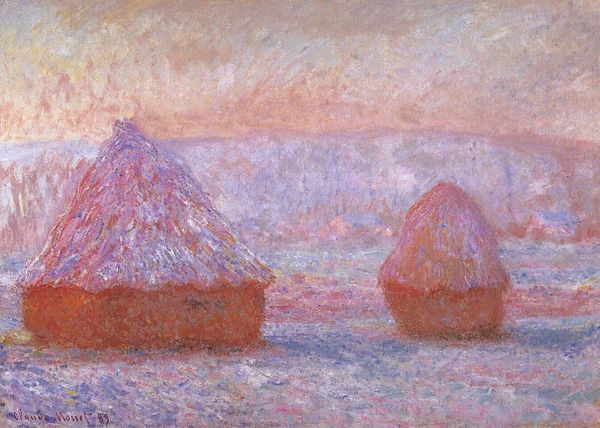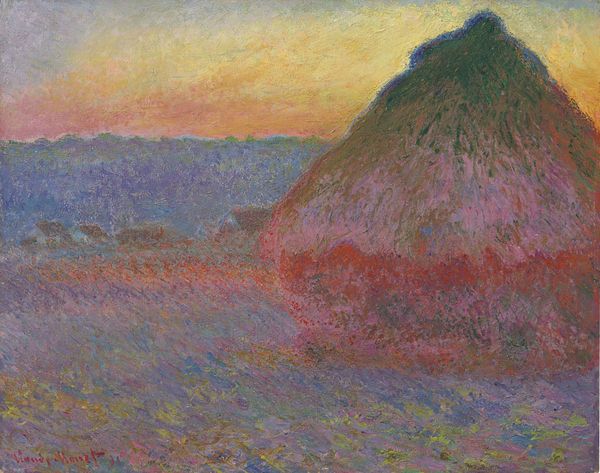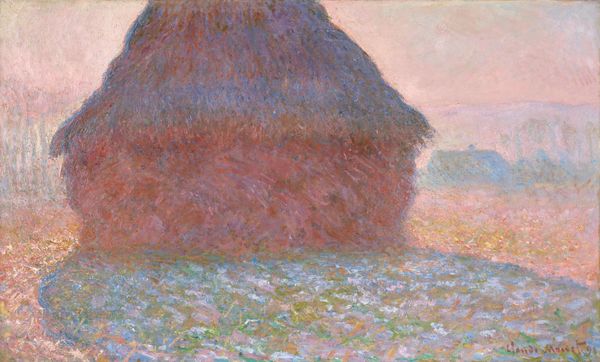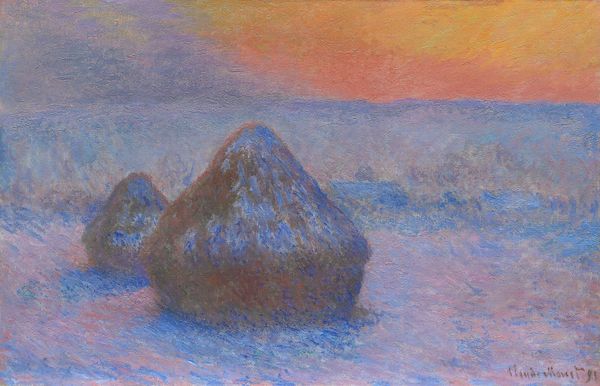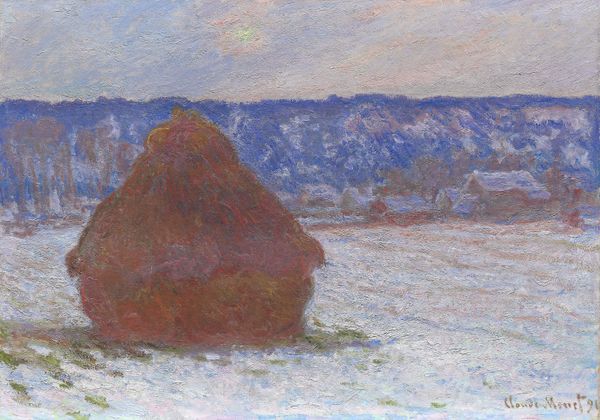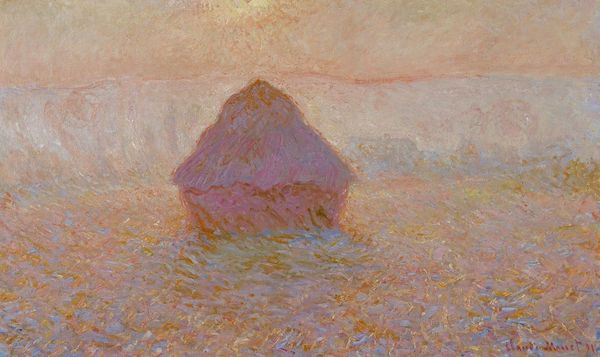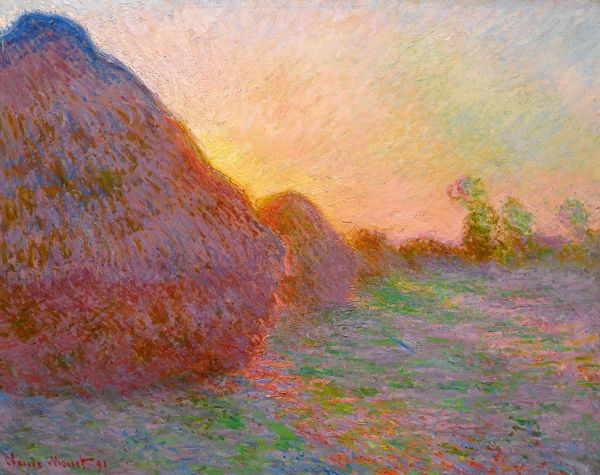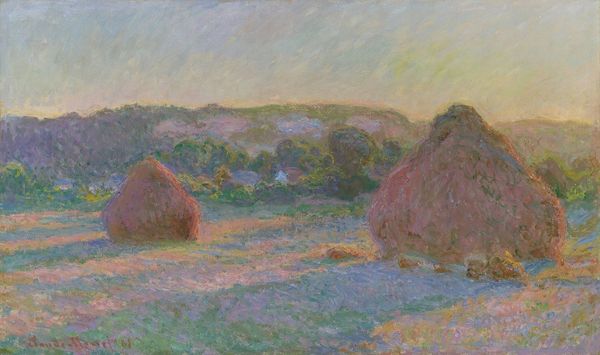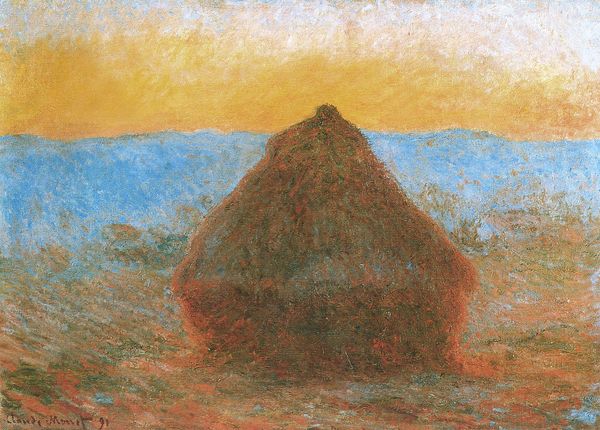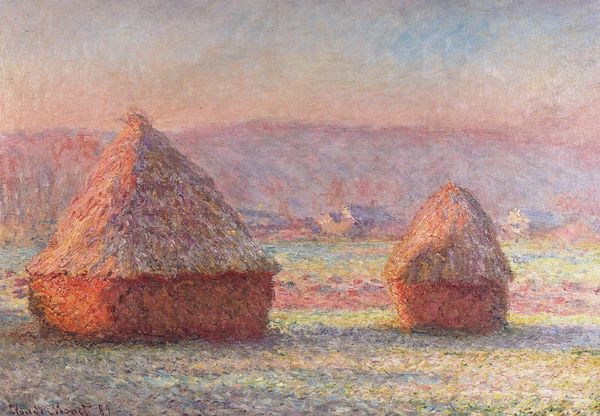
Dimensions: 64 x 93 cm
Copyright: Public domain
Curator: Looking at Monet's "Stack of Wheat (Thaw, Sunset)" from 1891, what's your immediate impression? Editor: A muted melancholy, wouldn’t you say? A palpable sense of fading light and perhaps, the quiet anticipation of a coming storm. The solitary haystack certainly dominates the scene. Curator: Indeed. Structurally, observe how Monet uses the haystack as a central, almost pyramidal form to anchor the composition. Notice also how the impasto application of the paint gives a very real sense of materiality. Editor: That’s it: a marker of time, labor, and seasonal cycles. Grain stacks like these have symbolized abundance, but also ephemerality for centuries. Given the thaw, that frozen ground will soon come back to life. The symbolism resonates powerfully with the cycle of life, death, and rebirth. Curator: Quite right. It is as though the thaw is a kind of structural rupture, destabilizing our reading of the surface—notice the dissolution of solid form through color modulation. The muted palette pushes the tonal unity that serves Monet well. Editor: This thaw itself carries symbolic weight. The transition suggests a liminal space. In a sense, we see the hope implicit in endings and fresh starts, reflecting the transience inherent in both nature and human existence. Curator: An apt consideration. As he moved through painting several versions of his grain stacks during different periods of the day, Monet pushes this form in and out of coherence via shifts in perspective, palette, and light. Editor: The very idea of the stack reflects a human desire for control over nature and agriculture, but the overwhelming impact of the scene—the sheer atmospheric weight of a particular moment—overpowers all this in its fragility. Curator: Agreed, that dialectic is palpable. Through that dissolution of stable, consistent form we arrive at an unstable perspective, always transient, temporal, even fragile. Editor: It becomes a poignant visual essay, on the meeting of cultural symbolism, artistic vision, and that persistent dance of presence and absence in the natural world. Thanks, as always, for the insightful discussion!
Comments
No comments
Be the first to comment and join the conversation on the ultimate creative platform.

